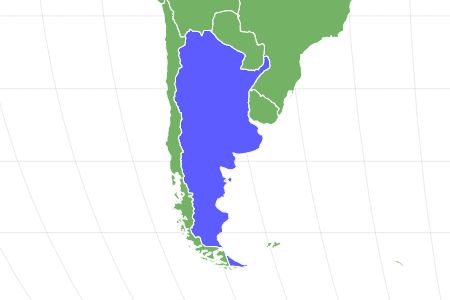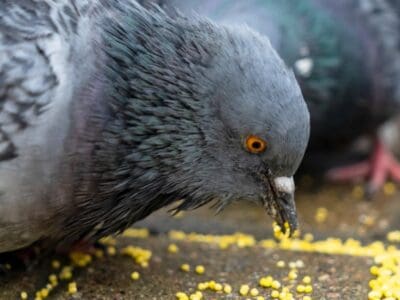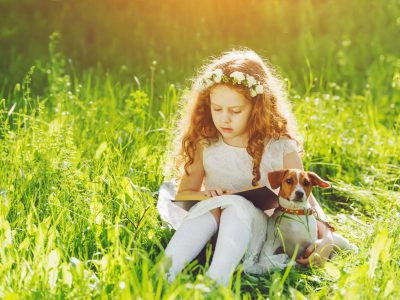Amargasaurus
Amargasaurus cazaui
Advertisement
Amargasaurus Scientific Classification
- Kingdom
- Animalia
- Phylum
- Chordata
- Family
- Dicraeosauridae
- Genus
- Amargasaurus
- Scientific Name
- Amargasaurus cazaui
Read our Complete Guide to Classification of Animals.
Amargasaurus Conservation Status
Amargasaurus Facts
- Diet
- Herbivore
Amargasaurus Physical Characteristics
View all of the Amargasaurus images!
Have you ever seen a complete skeleton of a brand new species of dinosaur?
When paleontologists discovered the Amargasaurus in 1984 in Argentina, they were amazed that the intact fossilized skeleton included a fragmented skull. This herbivore was a Sauropod that lived during the Cretaceous period and is one of the most-studied dinosaurs of our time due to the excellent and complete specimen.
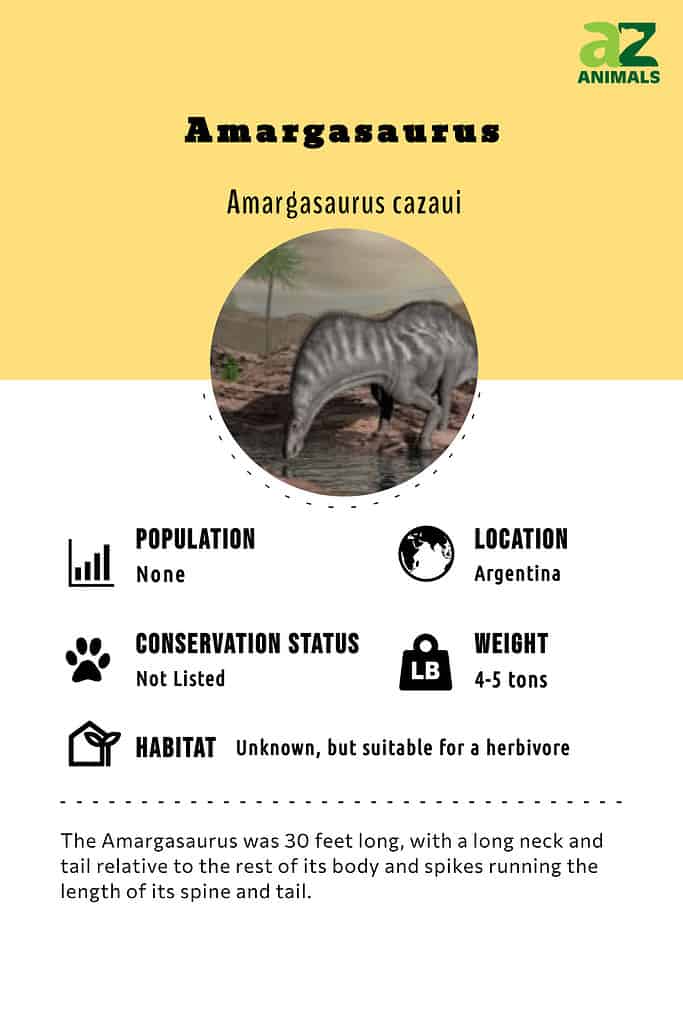
Classification and Scientific Name
There is only one known species of Amargasaurus (La Amarga lizard), known by its scientific name Amargasaurus cazaui. Starting at the top of the classification system, it an animal from the Phylum Chordata, Clades Dinosauria and Saurischia, and the extinct clades Sauaropodomorpha and Sauropoda. Sauropods are characterized by walking on all four legs, having long necks and tails, and having small heads relative to their large size.
Further, the Amaragasaurus is from the Superfamily Diplodocoidea and the Family Dicraeosauridae, both extinct, of course. These dinosaurs all had long necks and long tails. They included well-known dinosaurs such as the Brontosaurus.
Description and Size

This 3D-rendered illustration of an Amargasaurus shows its small head, long neck and tail, and prominent spikes.
©SciePro/Shutterstock.com
While other Sauropods were some of the largest dinosaurs of all time, Amargasaurus was a bit smaller than its relatives. It was around 30 feet long from the top of its head to the tip of its tail. It did have a long neck and tail relative to the rest of its body, but its neck was not quite as long as the Apatosaurus or Brontosaurus but was still recognizable as a Sauropod.
The Amargasaurus weighed about 4-5 tons, on the small side for a Sauropod (some even call it a dwarf Sauropod). This was still a large dinosaur, however.
One of the most distinctive features of the Amargasaurus was the double row of bony spikes running the entire length of its neck, tapering off toward the end of the spine. From there, a single row of spikes continued down the length of its tail. It was one of just a few Sauropods to have this feature.
The tallest of these spikes measured about two feet in length and were located on the Amargasaurus’s neck. They were circular at the base and tapered at the top. Scientists thought these spikes might have been like a sail, but now believe that they were probably covered in keratin like other spiked dinosaurs. They aren’t sure what purpose these served, but they may have helped with defense or made the Amargasaurus appear ferocious to predators.

©Elenarts/Shutterstock.com
Diet
Only the back portion of the Amargasaurus skull was preserved, making it more difficult for researchers to pinpoint exactly what it ate. They had to use their knowledge of related Sauropods, as well as similarities and differences in bone structure, to determine that the Amargasaurus was a herbivore that ate plants.
The Dicraeosaurus is the most closely related dinosaur with complete skull fragments. This dinosaur had long teeth that helped it tear leaves, branches, and other vegetation from plants. The Amargasaurus likely had a similar structure and ate the same diet.
Sauropods were some of the largest and tallest dinosaurs of their day, able to reach high up into trees for food. While the Amargasaurus was a bit smaller and shorter than some other Sauropods, this helped it take advantage of the mid-height plant life. The differing sizes were likely one way that all Sauropods evolved to live and survive during the same prehistoric period.
Habitat
Scientists know a lot about when and where Amargasaurus lived due to their discovery of such a complete specimen. It lived in modern-day Argentina during the Early Cretaceous Period. This period spanned 145 to 100.5 million years ago. The Amargasaurus fossil that paleontologists discovered can be dated to between 129 and 122 million years ago.
Scientists do not know much more about the habitat of this dinosaur because it was found in only one place and dated to one time period. It may have evolved from other dinosaurs living in that area or migrated as land shifted during prehistoric times.
Threats And Predators
The Amargasaurus probably had fewer predators to contend with than some other dinosaurs of the Cretaceous due to the spikes on their necks. These could have acted as a deterrent to attacks by just appearing fierce or provided protection if an Amargasaurus was attacked.
Amargasaurus had to compete with other herbivores for food. This included competing with other Amargasauruses. Scientists believe that most dinosaurs engaged in competition with others of their species for mates as well. This included the Amargasaurus. If an adult Amargasaurus was injured during these displays or fights, it could have been deadly.
Young Amargasaurus
Like other dinosaurs, the Amargasaurus laid eggs. When their young were still in their eggs, other dinosaurs may have stolen them for food. Young and old Amargasauruses were also vulnerable to predators because they could not fight them off as easily. However, juvenile specimens have not been discovered, so researchers do not know if they were born with their bony spikes or developed them as they grew.
Discoveries and Fossils
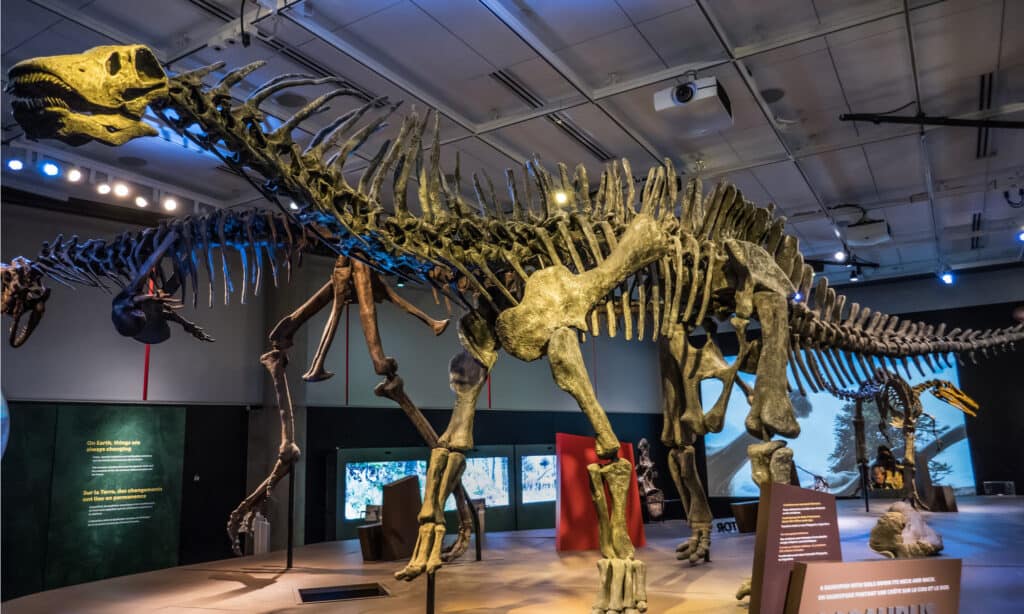
A skeleton of Amargasaurus in the Ultimate Dinosaurs traveling exhibition.
©William Cushman/Shutterstock.com
The Amargasaurus has one of the most fascinating discovery stories of all dinosaurs. Paleontologist Jose Bonaparte’s 1984 team included Guillermo Rougier, who found an almost completely intact fossilized skeleton of a brand new type of dinosaur in the La Amarga Formation in Argentina.
What made this discovery so amazing is that many of the bones, including the vertebrae, were found in their original locations. Some were even still connected to each other. Unfortunately, the front part of the skull was not there and parts of the tail were also missing. Scientists used their knowledge of other dinosaurs to examine the pieces remaining and realized that they were looking at a new species of Sauropod.
The official naming and classification came later in the early 1990s. Since this initial discovery, no other Amargasaurus specimens have been found. Fortunately, scientists can learn a lot about this species, including when and how it lived, by studying the single specimen that they have. Because they have only one fossil to study, however, they do not know very much about the various stages of the dinosaur’s life.
Extinction
Because there is only one known specimen, it is impossible to say when the Amargasaurus went extinct. It lived during the Early Cretaceous Period, around 130 to 120 million years ago. At the end of the Cretaceous Period, 66 million years ago, all dinosaurs went extinct due to a specific extinction event that brought about an ice age.
Whether the Amargasauruses went extinct before this is unknown. If they did, it is likely due to competition for resources, dwindling populations, or other natural events.
Similar Animals to The Amargasaurus
Other Sauropods related to the Amargasaurus include:
- Dicraeosaurus: This mid-sized Sauropod was closely related to the Amargasaurus as another member of the Dicraeosauridae family. Their necks were shorter but they had similar features. Scientists use the Dicraeosaurus skull to approximate what the complete Amargasaurus skull looked like.
- Apatosaurus: This dinosaur is one of the best-known and most recognizable Sauropods. It was also one of the largest, at up to 75 feet long. It did not have spikes on its neck like the Amargasaurus but did have a long neck and tail.
Amargasaurus FAQs (Frequently Asked Questions)
When did Amargasaurus live?
Amargasaurus lived during the Early Cretaceous Period, around 130 to 120 million years ago. Scientists can pinpoint with relative accuracy when it lived due to the discovery of an intact fossilized skeleton. Because that was on the only discovered Amargasaurus, however, they do not know when exactly it went extinct.
How big was an Amargasaurus?
Amargasaurus was around 30 feet long and 4-5 tons. This was a large dinosaur but one of the smaller Sauropods. Its neck and tail were long relative to the rest of its body.
Thank you for reading! Have some feedback for us? Contact the AZ Animals editorial team.
Sources
- Ogden's George S. Eccles Dinosaur Park, Available here: https://www.dinosaurpark.org/amargasaurus
- Natural History Museum, London, Available here: https://www.nhm.ac.uk/discover/dino-directory/amargasaurus.html
- Western Australian Museum, Available here: https://museum.wa.gov.au/explore/dinosaur-discovery/amargasaurus

